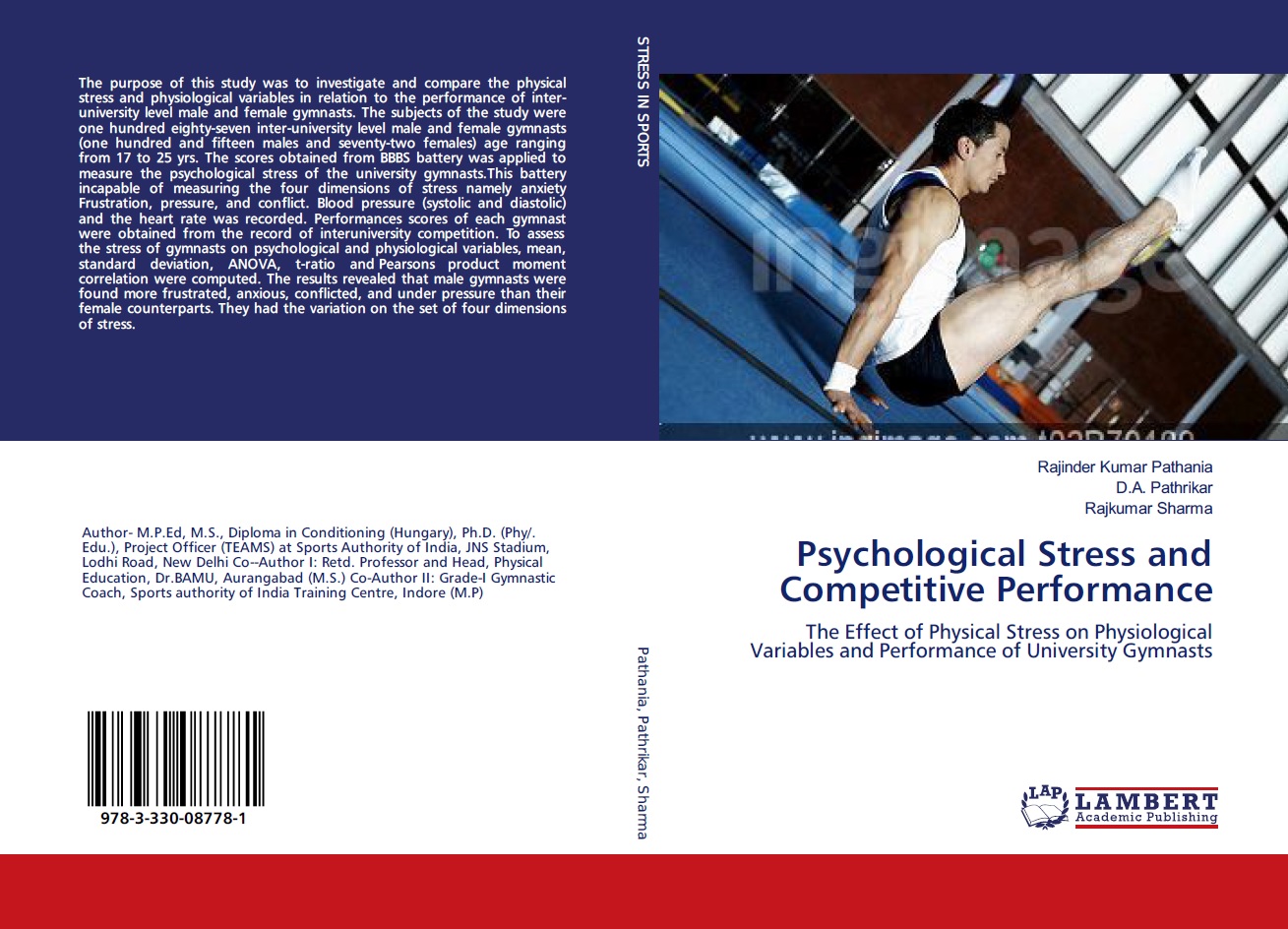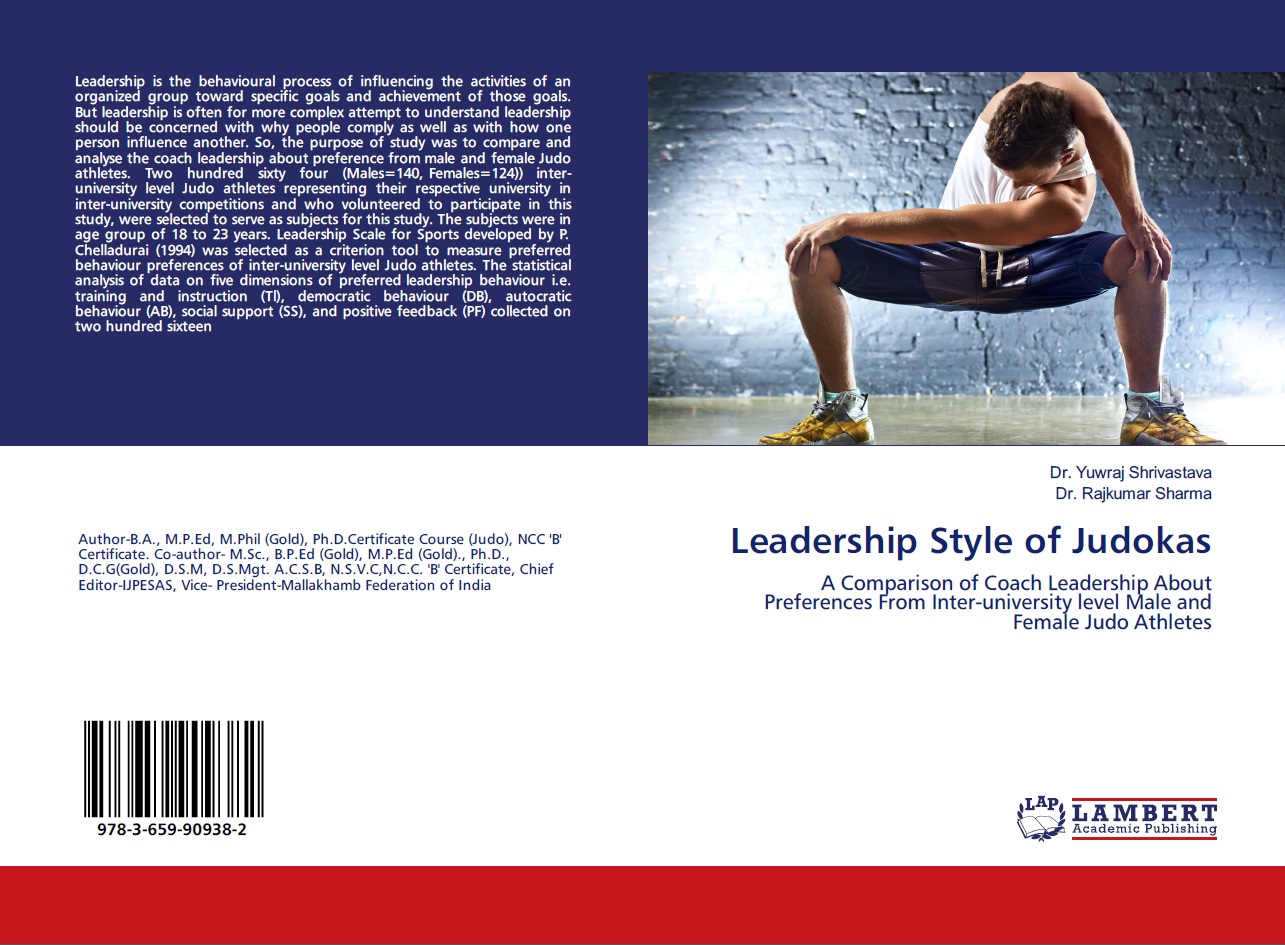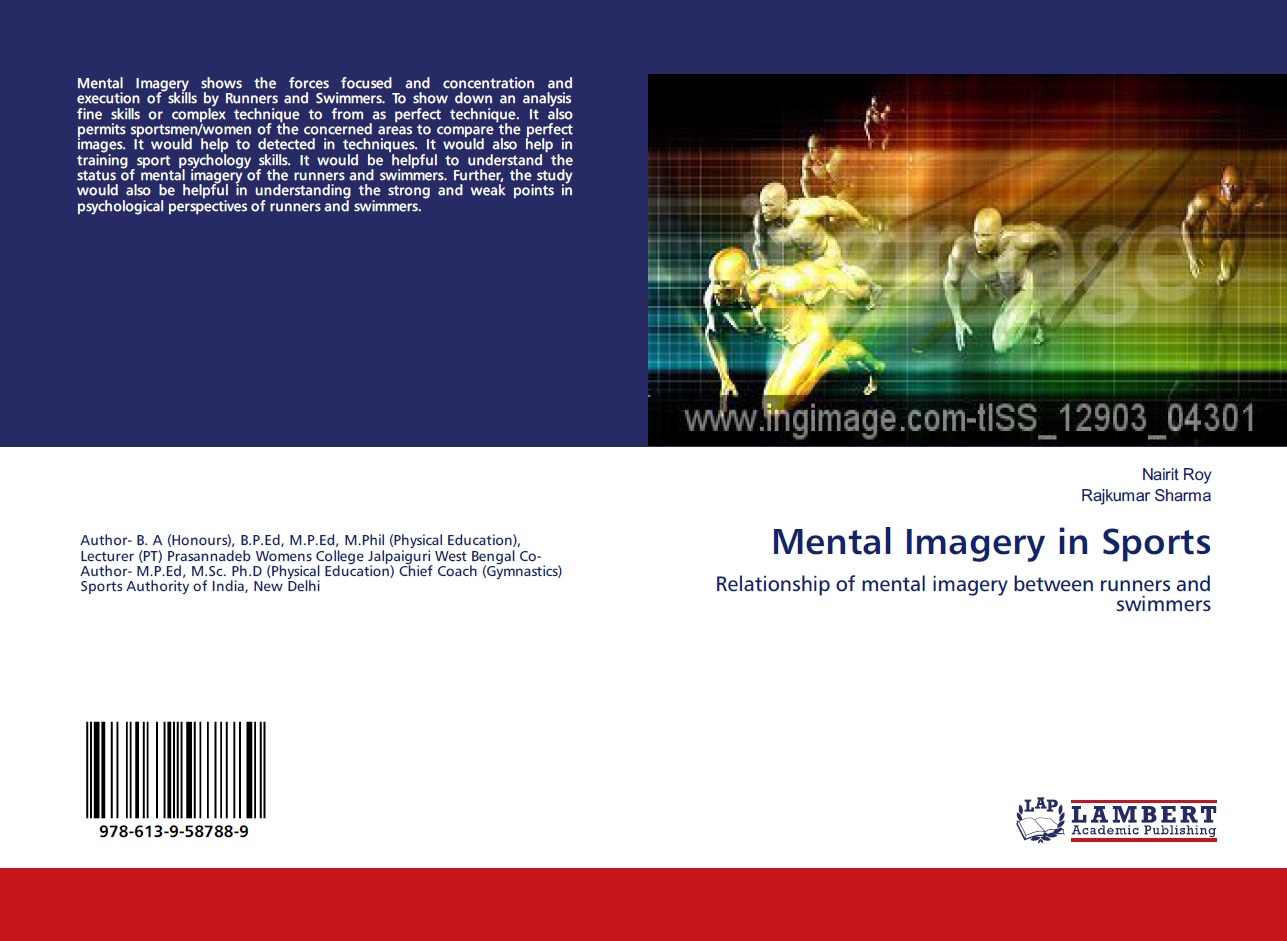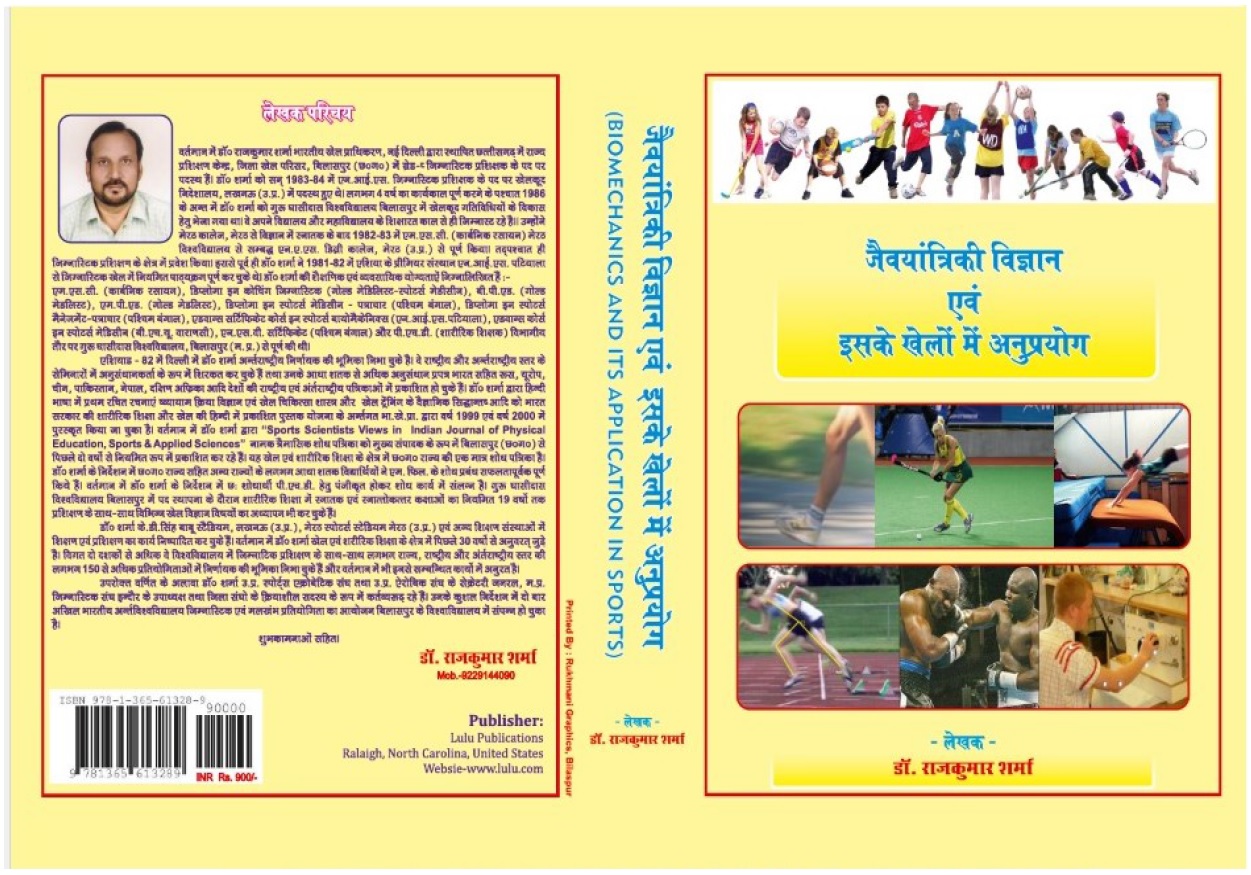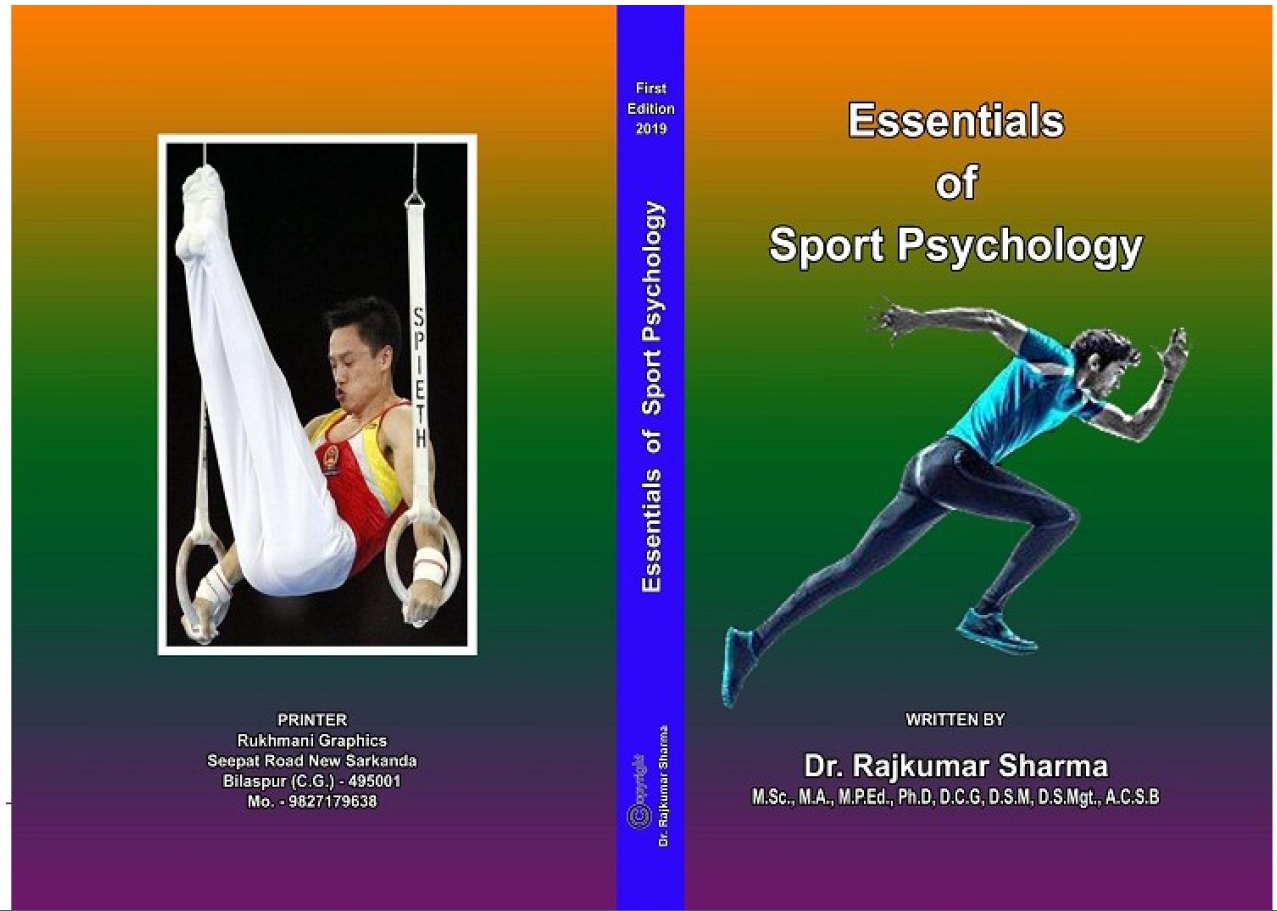| S.No. | Total View Count | Title of Manuscript | Page No | Download/ PDF |
|---|---|---|---|---|
| 1 | MORE THE NUMBER OF SPORT RELATED CONCUSSIONS,WORSE THE OUTCOME, FACT OR FALLACY: A SYSTEMATIC REVIEW Author: Akshita Goel and Anilendu Pramanik | 06-19 |  16 16 |
Article info
doi no.: 05-2016-44975451,
DOI Link :: https://doi-ds.org/doilink/02.2022-34915863/IJPESAS/05.2016-44975451/V12/I1/A2
AFFILIATIONS:
1. MYAS-GNDU Department of Sports Sciences and Medicine, Guru Nanak Dev University, Amritsar, Punjab, India. PIN: 143005
2. MYAS-GNDU Department of Sports Sciences and Medicine, Guru Nanak Dev University, Amritsar, Punjab, India. PIN: 143005
* Corresponding author : Akshita Goel, Guru Nanak Dev University, Amritsar, India. Email id: akshgoel1411@gmail.com
Background: Sport-related concussion (SRC) is a highly ubiquitous injury afflicting millions of sport-persons. Regarding underlying pathophysiology and long-term neurologic repercussions of SRC, literature encompasses a broad range of conclusions. The number of SRCs sustained and associated symptomology have been subject to conflict with mixed results. Thereby, the objective of this systematic review was to fill lacunae on implications of SRCs and determine whether concussion count has considerable adverse effects. Methods: Electronic literature search was developed utilizing a Peer Review of Electronic Search Strategies Checklist. Reporting conforms to Preferred Reporting Items for Systematic Reviews and Meta-Analyses checklist. Google-scholar, PubMed, Medline were systematically searched to identify articles with limits to English, published between January 2001-July 2021. Review articles, editorials, and gray literature were excluded. Articles were critically appraised using Structured Effectiveness for Quality Evaluation of Study scoring and risk of bias assessment using Downs & Black checklist. Results: 1679 articles were identified. 40 met inclusion criteria. They were reviewed and data were extracted. Conclusions: Given the dearth of available data, this systematic review includes parameters for SRC prognosis and highlights novel domains and future perspectives for SRC research. It was observed multiple self-reported SRCs have non-significant impacts in long term. Symptom reporting was related to psychiatric history, career duration, playing position, substance abuse, and lastly the number of concussions. Varying implications are attributable to premorbid cognitive-reserve, injury type, genes, concussion timing, or as-yet-unidentified factors. Concussion count doesn’t impact treatment interventions response. Utilizing advanced imaging and biomarkers may provide additional understanding of by identifying changes in brain physiology.
Keywords: Sport-Related Concussion, Traumatic Brain Injury, Neuropsychological Testing.
References
[1] Giza, C. C. and Kutcher, J. S. (2014). An introduction to sports concussions, Contin. Lifelong Learn. Neurol., 20 ( 6 ), Sports Neurology, p. 1545.
[2] Noble, J. M. and Hesdorffer, D. C. (2013). Sport-related concussions: a review of epidemiology, challenges in diagnosis, and potential risk factors. Neuropsychol. Rev., 23 ( 4), 273–284.
[3] McCrory, P. (2001). The nature of concussion: a speculative hypothesis. Br. J. Sports Med., 35 (3), 146–147.
[4] Slobounov, S. (2008). Concussion classification: Historical perspectives and current trends. Inj. Athl. Causes consequences, pp. 399–414.
[5] Giza, C. C. et al. (2013). Summary of evidence-based guideline update: evaluation and management of concussion in sports: report of the Guideline Development Subcommittee of the American Academy of Neurology. Neurology, 80(24), 2250–2257. .
[6] Page, M. J. et al. (2021). The PRISMA 2020 statement: an updated guideline for reporting systematic reviews. Bmj, 372.
[7] McGowan, J., Sampson, M. D., Salzwedel, M. E., Foerster, C. V., and Lefebvre, C. (2016). PRESS peer review of electronic search strategies: 2015 guideline statement. J. Clin. Epidemiol., 75, 40–46.
[8] Blake, T. A., McKay,C. D., Meeuwisse,W. H., and Emery, C. A. (2016). The impact of concussion on cardiac autonomic function: a systematic review. Brain Inj., 30(2), 132–145, 2016.
[9] Cunningham, J., S. Broglio,P. M., Grady, O., and Wilson, F. (2020). History of sport-related concussion and long-term clinical cognitive health outcomes in retired athletes: a systematic review. J. Athl. Train., 55(2), 132–158.
[10] Echlin, P. S. et. al. (2010). A prospective study of physician-observed concussions during junior ice hockey: implications for incidence rates. Neurosurg. Focus, 29(5), E4, 2010.
[11] Lovell, M. R., Collins, M. W., Iverson, G. L., Johnston, K. M., and Bradley, J. P. (2004). Grade 1 or ‘ding’ concussions in high school athletes. Am. J. Sports Med., 32 (1), 47–54.
[12] Lincoln, A. E., Caswell, S. V., Almquist, J. L., Dunn, R. E., Norris, J. B., and Hinton, R. Y. (2011). Trends in concussion incidence in high school sports: a prospective 11-year study. Am. J. Sports Med., 39(5), 958–963, 2011.
[13] Field, M., Collins, M. W., Lovell, M. R., and Maroon, J. (2003). Does age play a role in recovery from sports-related concussion? A comparison of high school and collegiate athletes. J. Pediatr., 142(5), 546–553.
[14] Brooks, B. L., Mrazik, M., Barlow, K. M., McKay, C. D., Meeuwisse, W. H., and Emery, C. A. (2014). Absence of differences between male and female adolescents with prior sport concussion. J. Head Trauma Rehabil., 29 (3), 257–264.
[15] Renton,T., Howitt, S. and Marshall,C. (2019). Lifetime prevalence of concussion among Canadian ice hockey players aged 10 to 25 years old, 2014 to 2017. J. Can. Chiropr. Assoc., 63 (2), 80.
[16] Schatz, P., Moser, R. S., Covassin, T., and Karpf, R. (2011). Early indicators of enduring symptoms in high school athletes with multiple previous concussions. Neurosurgery, 68(6), 1562–1567.
[17] Mannix, R., Mannix, G. L. Iverson, B., Maxwell, J. E., Atkins, R. , Zafonte and Berkner, P. D. (2014). Multiple prior concussions are associated with symptoms in high school athletes. Ann. Clin. Transl. Neurol., 1(6), 433–438.
[18] Sigurdardottir, S., Andelic, N., Roe, C., Jerstad, T., and Schanke, A. K. (2009). Post-concussion symptoms after traumatic brain injury at 3 and 12 months post-injury: a prospective study,” Brain Inj., 23 (6), 489–497.
[19] Weber, M. L. et al. (2018). Influences of mental illness, current psychological state, and concussion history on baseline concussion assessment performance. Am. J. Sports Med., 46 (7), 1742–1751.
[20] Iverson, G. L., Echemendia, R. J., LaMarre, A. K., Brooks, B. L., and Gaetz, M. B. (2012). Possible lingering effects of multiple past concussions. Rehabil. Res. Pract., 20 (12),
[21] Buckley, T. N., Murray, G. B., Munkasy, A. J., Oldham, R. K., Evans, M., and Clouse, B. (2021). Impairments in Dynamic Postural Control across Concussion Clinical Milestones. J. Neurotrauma, 38 (1), 86–93.
[22] Weber, M. L. et al. (2019). “Health-related quality of life following concussion in collegiate student-athletes with and without concussion history,” Ann. Biomed. Eng., 47 (10), 2136–2146.
[23] Steven, G. B., James, M. K. J., Toni, T. M., and Davis, M. (2018). Attention deficit hyperactivity disorder increases anxiety and depression in concussed college athletes. Neurology, 91(23) Supplement 1, S27–S28.
[24] McAllister-Deitrick, J. A., Trbovich, Broglio, M., McCrea, S. P. M., T. W. and McAllister, A., Kontos, P. (2020). Effect of diagnosed sleep disorders on baseline concussion symptom, cognitive, and balance assessments in collegiate athletes. Am. J. Sports Med., 48 (4), 991–999.
[25] Gardner, A., E. Shores, A., and Batchelor, J. (2010). Reduced processing speed in rugby union players reporting three or more previous concussions. Arch. Clin. Neuropsychol., 25 (3), 174–181.
[26] McFarlane, L. H., Burles, F., Yeates, K. O., Schneider, K., and Iaria, G. (2020). A pilot study evaluating the effects of concussion on the ability to form cognitive maps for spatial orientation in adolescent hockey players. Brain Inj., 34 (8), 1112–1117.
[27] Tarazi, A. et al. (2018). Motor function in former professional football players with history of multiple concussions. J. Neurotrauma, 35 (8), 1003–1007.
[28] Kerr, Z. Y., Thomas, L. C., Simon, J. E., McCrea, M., and Guskiewicz, K. M. (2018). Association between history of multiple concussions and health outcomes among former college football players: 15-year follow-up from the NCAA concussion study (1999-2001). Am. J. Sports Med., 46 (7), 733–1741. .
[29] Buckley, T. A. et al. (2016). Evidence of a conservative gait strategy in athletes with a history of concussions. J. Sport Heal. Sci., 5 (4), 417–423.
[30] Buckley, T. A., Munkasy, B. A., Krazeise, D. A., Oldham, J. R., Evans, K. M., and Clouse, B. (2020). Differential effects of acute and multiple concussions on gait initiation performance. Arch. Phys. Med. Rehabil., 101 (8), 1347–1354.
[31] Houston, M. N., Hoch, J. M., Cameron, K. L., Abt, J. P., Peck, K. Y., and Hoch, M. C. (2018). Sex and number of concussions influence the association between concussion and musculoskeletal injury history in collegiate athletes. Brain Inj., vol. 32 (11), 1353–1358.
[32] Tapper, A., Gonzalez, Roy, D. E., and Niechwiej-Szwedo, E. (2017). Executive function deficits in team sport athletes with a history of concussion revealed by a visual-auditory dual task paradigm. J. Sports Sci., 35 (3), 231–240.
[33] Elbin, R. J. et. al. (2012). Do brain activation changes persist in athletes with a history of multiple concussions who are asymptomatic?. Brain Inj., 26 (10), 1217–1225.
[34] Terry, D. P., Faraco, C. C., Smith, D., Diddams, M. J., Puente, A. N., and Miller, L. S. (2012). Lack of long-term fMRI differences after multiple sports-related concussions. Brain Inj., 26(13–14), 1684–1696.
[35] Wright, A. D., Smirl, J. D., Fraser, S. K., Bryk, K. and Van-Donkelaar, (P. 2017). A history of multiple concussions does not confer long-term impairments to dynamic cerebral autoregulation. Br. J. Sports Med., 51 (11), A23–A24.
[36] Clark, M. D. et al. (2018). Effects of career duration, concussion history, and playing position on white matter microstructure and functional neural recruitment in former college and professional football athletes. Radiology, 286 (3), 967–977.
[37] Kumazaki, A., Ogoh, S. A., Sakai, Hirasawa, S., and Hirose, N. (2018). Cognitive function and dynamic cerebral blood flow regulation in multiple concussions. Asian J. Sports Med., 9(1).
[38] Smirl, J. D., Wright, A. D., Bouilane, K. K., Bryk., and van Donkelaar, P. (2017). A history of multiple concussions does not alter the transcranial doppler-based assessment of the neurovascular coupling response. Br. J. Sports Med., 51(11), A23–A23.
[39] Helmich, I. and Lausberg, H. (2019). Nonverbal hand movement durations indicate post-concussion symptoms of athletes. J. Neurotrauma, 36 (20), 2913–2921.
[40] Reilly, N., Prebor, J., Moxey, J. and Schussler, E. (2020). Chronic impairments of static postural stability associated with history of concussion. Exp. brain Res., 238(12), 2783–2793.
[41] Neustadtl, A. L., Bukowski, W. K., Neustadtl, A., and Milzman, D. (2021). Performance after concussion in National Hockey League players. J. Athl. Train., 56 (4), 404–407.
[42] Stafford, C. A., Stojanoski, B. C., Wild, J. D., Brewer-Deluce, Wilson, T. D. and Owen, A. M. (2020). “Concussion-related deficits in the general population predict impairments in varsity footballers.,” J. Neurol., 267( 7).
[43] De Beaumont, L., Lassonde, M. S., Leclerc, and Théoret, H. (2007). Long-term and cumulative effects of sports concussion on motor cortex inhibition. Neurosurgery, 61(2), 329–337.
[44] De Beaumont, L., Brisson, B., Lassonde, M., and Jolicoeur, P. (2007). Long-term electrophysiological changes in athletes with a history of multiple concussions. Brain Inj., 21( 6), 631–644.
[45] Multani, N. et al.(2016). The association between white-matter tract abnormalities, and neuropsychiatric and cognitive symptoms in retired professional football players with multiple concussions. J. Neurol., 263 (7), 1332–1341.
[46] Guay, S., De Beaumont, L., Drisdelle, B. L., Lina, J. M., and Jolicoeur, P. (2018). Electrophysiological impact of multiple concussions in asymptomatic athletes: A re-analysis based on alpha activity during a visual-spatial attention task. Neuropsychologia, 108, 42–49.
[47] Misquitta, K. et al. (2018). The relationship between brain atrophy and cognitive-behavioural symptoms in retired Canadian football players with multiple concussions. Neuroimage Clin., 19, 551–558.
[48] Thériault, M., De Beaumont, Gosselin, L. N., Filipinni, M., and Lassonde, M. (2009). Electrophysiological abnormalities in well functioning multiple concussed athletes,” Brain Inj., 23 (11), 899–906.
[49] June, D. et al. (2020). Lasting consequences of concussion on the aging brain: Findings from the Baltimore Longitudinal Study of Aging. Neuroimage, 221, 117-182.
 admin@sportscientistsviews.com
admin@sportscientistsviews.com

